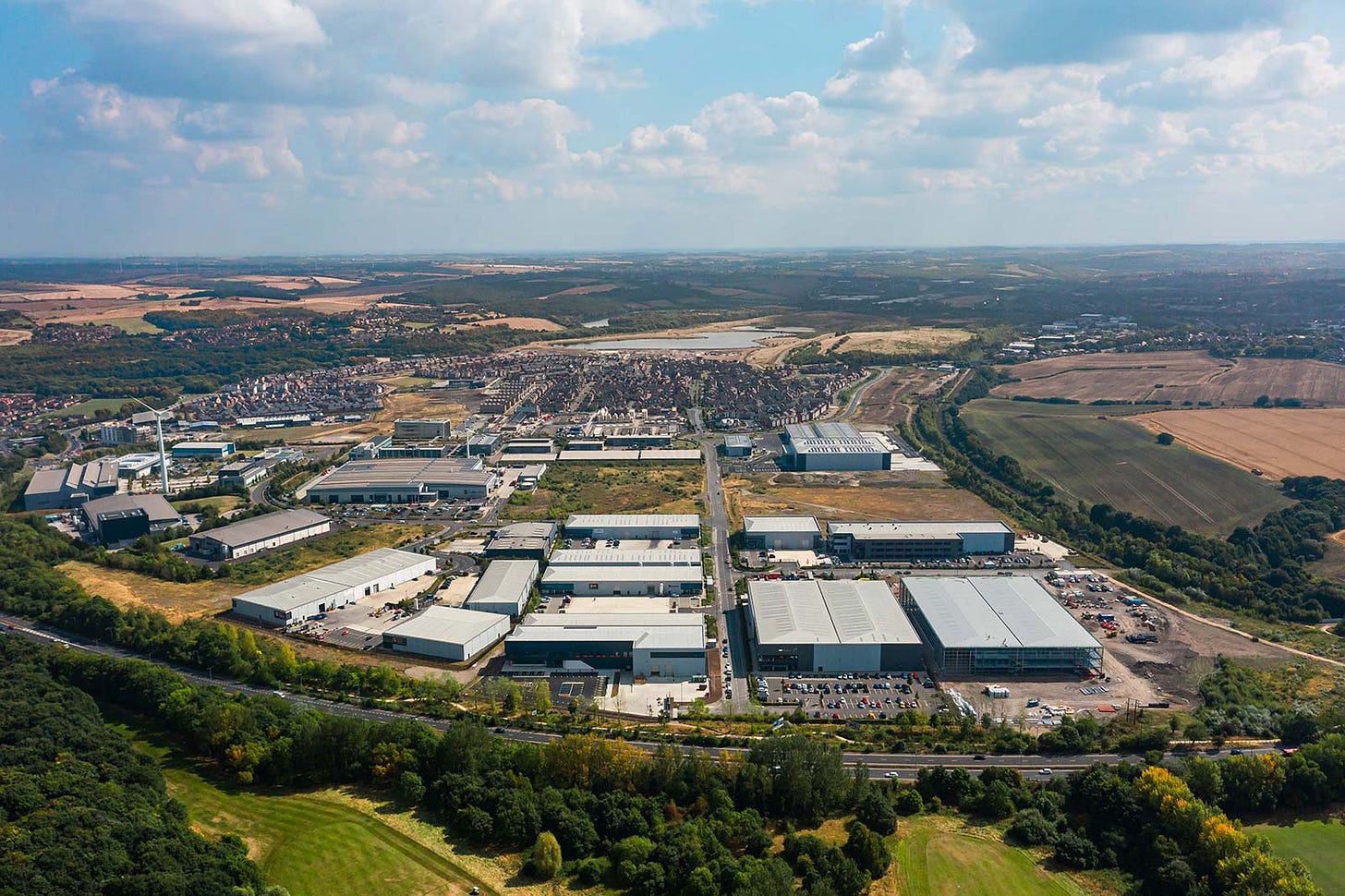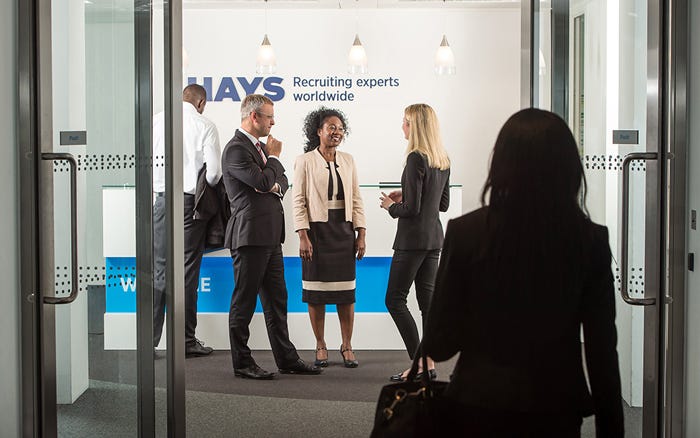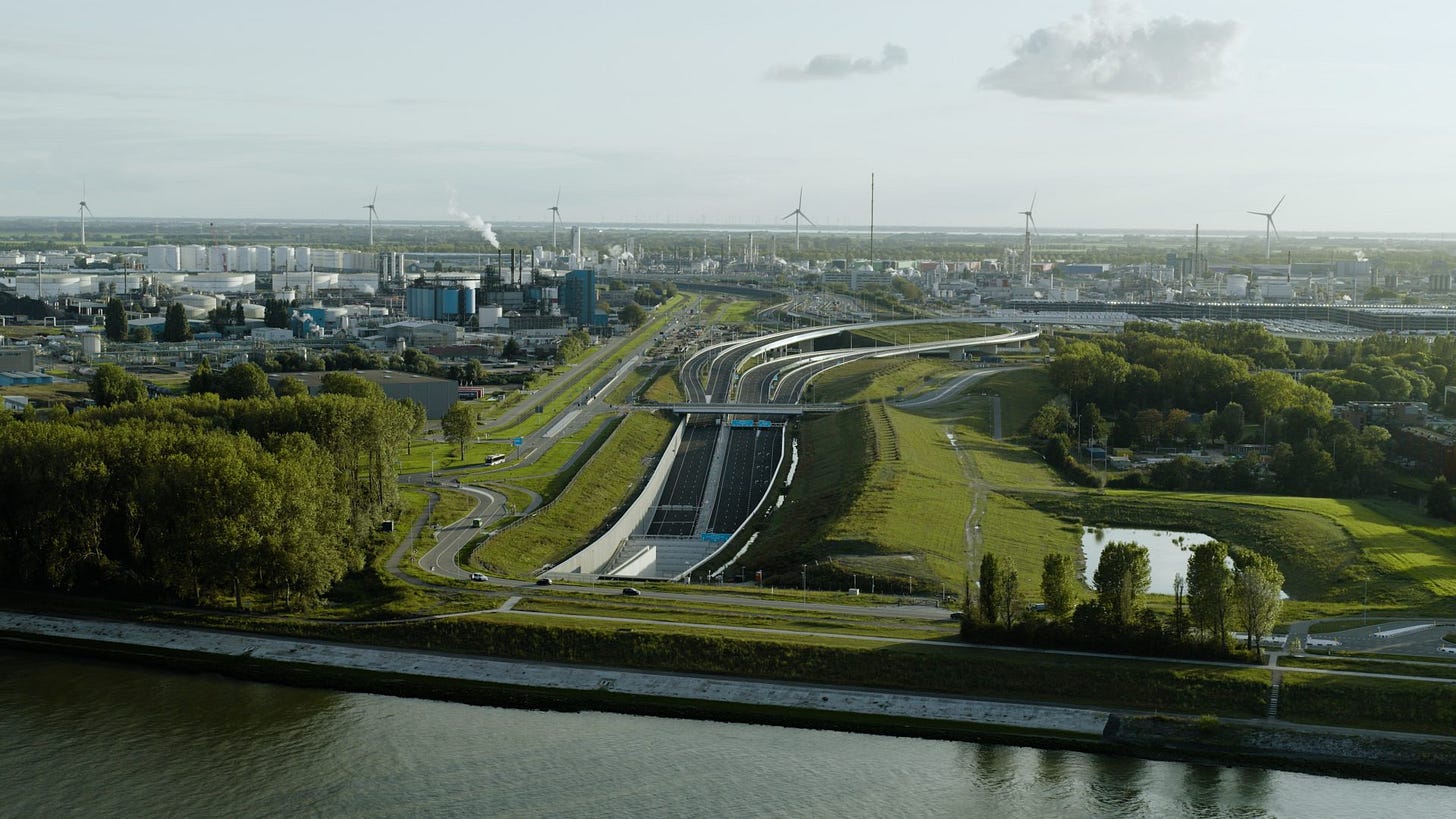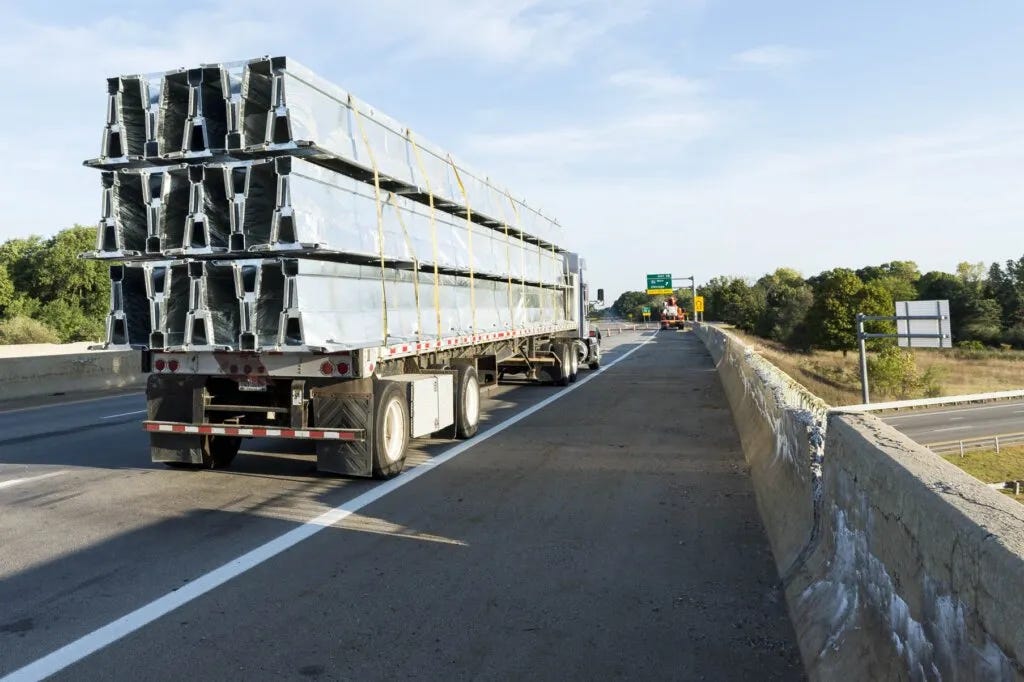FTSE 250 A to Z: 🟢 Harworth 🔴 Hays 🟡 Helios Towers 🟡 HICL Infrastructure 🟢 Hill & Smith
Industrial regeneration, legacy infrastructure assets, and a global leader in crash barriers
An infrastructure focused batch with Harworth, a property developer focused on industrial regeneration, HICL, a closed-end trust that owns a batch of UK PFI deals plus energy and water assets, and Hill & Smith, one of those small industrials based in the Midlands, founded way back when, which is benefitting from US AI-driven capital investment and infrastructure spending.
As before these are quick summaries with red, amber, green denoting whether I want to take a closer look. No detailed financials or valuations yet. You can search the full list of FTSE 250 companies here.
This is not investment advice and all opinions are my own. Please do your own research and invest according to your financial circumstances.
🟢 HARWORTH (HWG)
Mkt cap: £531m | Revenue FY24: £182m | Net income FY24: £57m
Harworth is a new entrant to the FTSE 250 but is far from a new kid in town. The property development company, focused on regenerating industrial sites, has its roots in the UK coal industry. When the British Coal Corporation, successor to the National Coal Board, was privatised in 1994, its assets were purchased by RJB Mining, and rebranded as UK Coal plc. As coalfields were shut, the business went into decline, and was restructured in 2012, with mining operations split from the property portfolio. That portfolio became Harworth Estates, which listed in 2015. The UK’s Pension Protection Fund still owns 17% (a function of the PPF also having its roots in the British Coal Corporation), with London and Amsterdam Trust (a vehicle for hedge fund billionaire Nick Roditi), and Peel Group (another UK property company) also owning 26% each. That’s leaves little free float, with nagging concerns as a minority shareholder. But with the caveat on ownership, I like Harworth. It has a niche focus and lots of expertise. I’m also increasingly drawn to the idea that we’re in a hardware world. Factories, data centres, infrastructure, etc. With a portfolio of brownfield sites, Harworth could be well-positioned to benefit from any uptick in UK capital investment – something that’s lagged for years but is now supported by a favourable tax regime.
Last updated: 15 October 2025
🔴 HAYS (HAS)
Mkt cap: £919m | Revenue FY25: £6.61bn | Net income FY25: £-7.8m
Here’s a contrarian play if you want one. Recruiting. A highly cyclical sector, where you make hay (sorry…) when the sun shines, when the economy is booming, and when people feel confident moving jobs; and when you hunker down and cut costs when the economy isn’t booming, people feel hesitant to move jobs and companies don’t want to hire. Unfortunately, the UK economy has been closer to the second scenario in recent years, and recruitment company profitability has taken a direct hit. Hays has issued several profit warnings, and the share price is down ~70% since mid-2021. A great opportunity then, surely? Buy the dip, sell at the peak. Easy stuff, especially as it really looks to be in a dip. The challenge is that momentum can be a powerful force, and right now there’s zero positive sentiment in this sector. If you can buy, hold and stomach the ride there is likely upside, but even with a cyclical recovery I have concerns over what the recruiting sector looks like in an AI world.
Further reading:
Last updated: 15 October 2025
🟡 Helios Towers (HTWS)
Mkt cap: £1.5bn | Revenue FY24: £792m | Net income FY24: £33.5m
Skipping through Helios quickly. Nothing against the company, just that it’s a telecoms infrastructure provider solely focused on Africa and the Middle East. Good for the UK market that it’s listed here but not for me.
Last updated: 15 October 2025
🟡 HICL Infrastructure (HICL)
Mkt cap: £2.3bn | Revenue FY24: £50m | Net income FY24: £45.9m
I’m breaking my rule again and venturing into investment trusts. The rationale is that this is a UK infrastructure-focused trust and if there is any rationale for owning investment trusts (also known as closed-end funds) it’s getting access to otherwise hard to own assets. I also started my career in infrastructure finance, at the tail end of the UK’s great experiment in Public Private Partnerships (PPP, aka the Private Finance Initiative in the UK) and spent two years raising money for infrastructure funds. HICL was a HSBC spin-out, which along with its then listed counterpart, John Laing, was one of the original infrastructure trusts. Fast forward twenty years, the trust is managed by InfraRed Capital Partners, and the portfolio comprises 57% PPP assets backed by long-term contracted revenues, and 43% other infrastructure, including UK water company, Affinity, and energy assets and toll roads. The portfolio has slowly morphed from UK PPP to more sensitive economic sectors, although the main driver of price remains interest rates. Hence the share price is ~30% down from its 2022 peak, at a ~20-25% discount to NAV (read more about discounts/premiums here). HICL recently sold £225m of UK PPP assets at a price in line with audited valuations, a sign that the discount to NAV could close. The concern is that the best assets get sold first, and that the real question around valuation is in what remains. I’m neutral, although personal background makes me want to dig into it more.
Last updated: 22 October 2025
🟢 Hill & Smith (HILS)
Mkt cap: £1.67bn | Revenue FY24: £855m | Net income FY24: £76m
The FTSE 250 does a good line in niche industrial firms, and Hill & Smith is another one. It specialises in highly engineered custom steel products for utilities and infrastructure markets; steel safety barriers for roads and construction zones; and steel galvanizing and coating services. It operates a decentralised model, with M&A used to hoover up smaller, complementary businesses that can immediately be value accretive. 58% of revenues come from the US, 38% from the UK, and 2% elsewhere. The US business has been the big success in recent years, benefitting from an increase in industrial investment triggered by the IRA and CHIPS Act, and now super charged by AI-related infrastructure spending, as well as industrial onshoring post tariff changes. The UK market has been more challenging, but as with Harworth, there could be catch-up potential here, with UK policy now more supportive of fixed investment and infrastructure spending. Hill & Smith has low debt, 15% operating margins, and steadily improving returns on capital. It seems a good company to take advantage of an industrial spending cycle – the obvious risk being a crash in the AI bubble that causes US capital investment to plunge.







